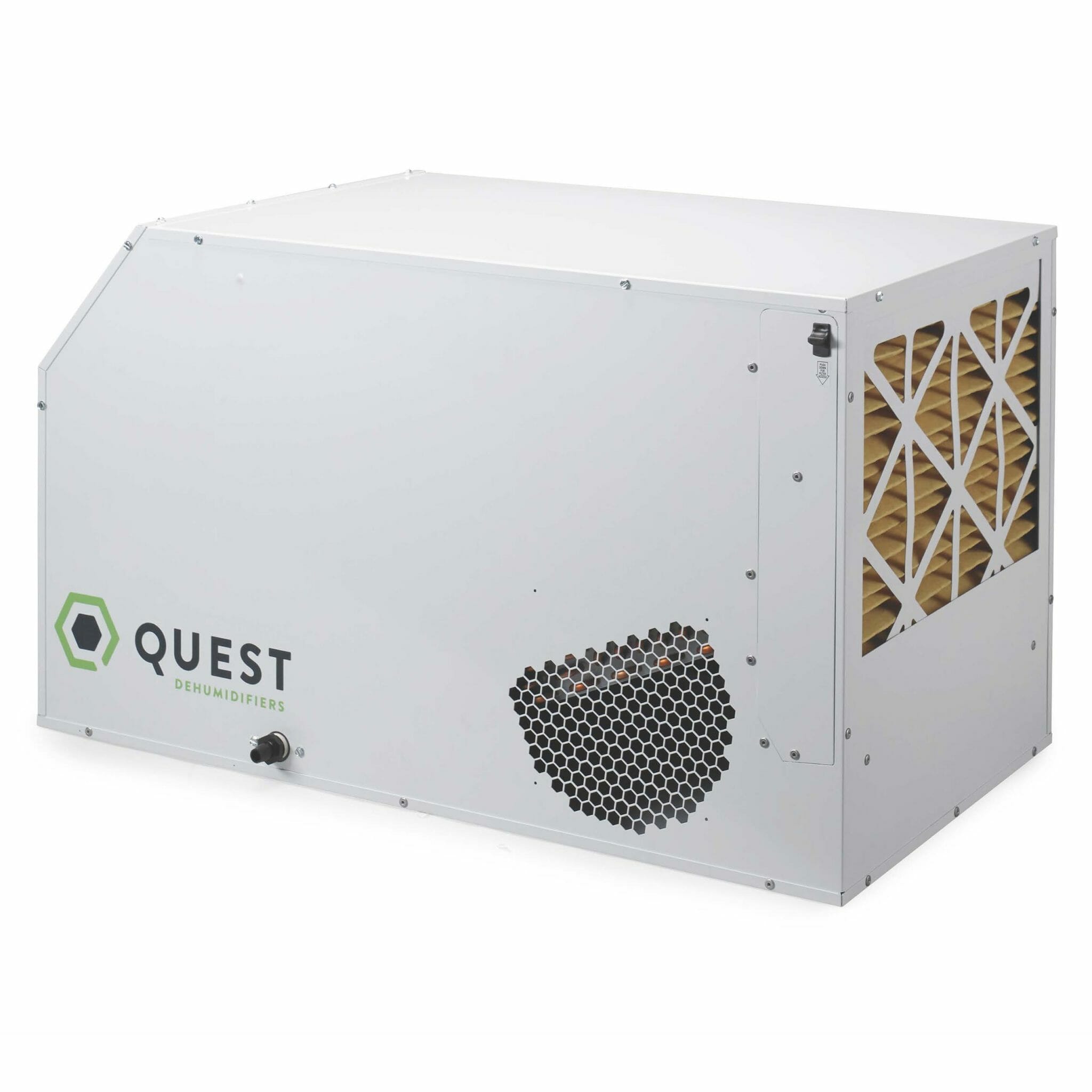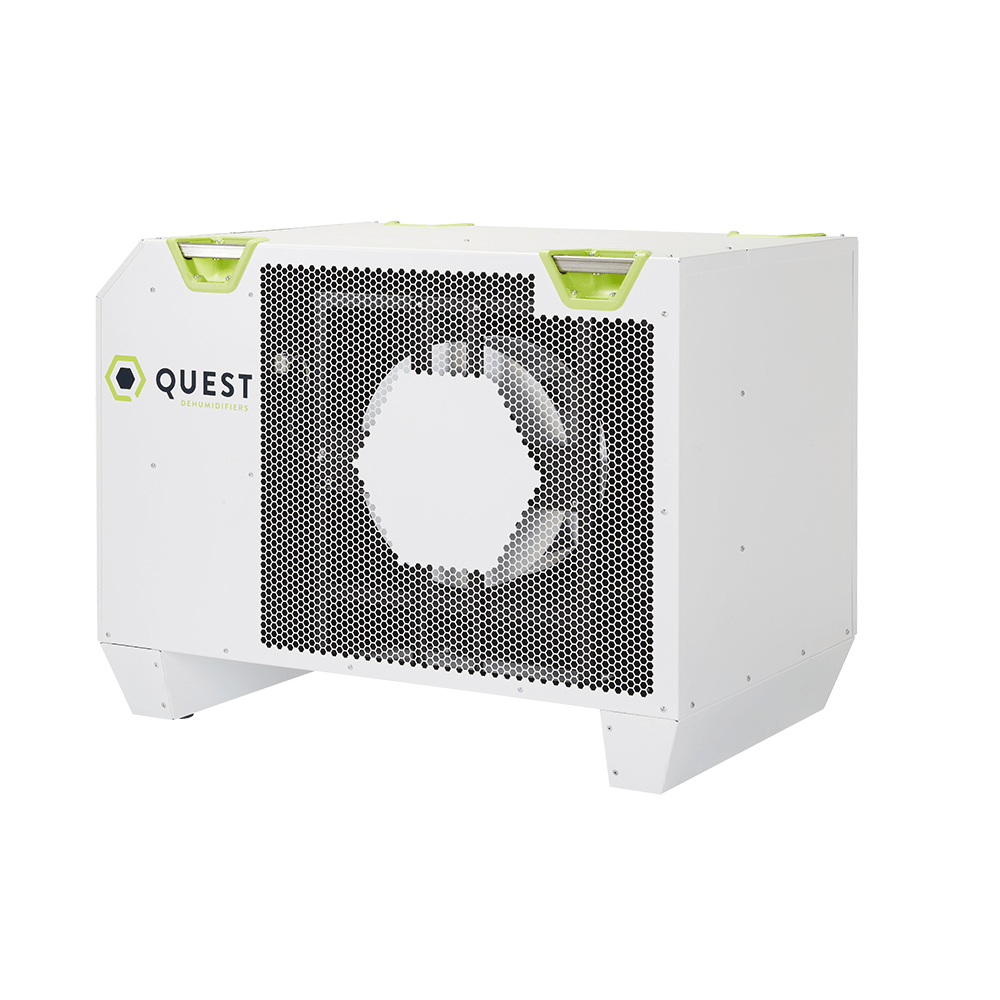Understanding bud rot:
Signs, symptoms and how to avoid it
Causes of bud rot
Bud rot is a gray mold that occurs in environments with poor air circulation and high moisture, conditions that encourage fungi to grow and flourish.
“Bud rot doesn’t happen overnight and is most common in larger buds and dense plants because they trap and accumulate moisture,” said Melaney Watson, factory representative of Quest. “Additionally, multiple plants that are close together are at a higher risk of infection.”
The fungus tends to be less of an indoor problem because indoor growers have more control of their environment when it comes to temperature, lighting, ventilation and humidity levels.
Because outdoor growers can’t control rain levels or morning dew, outdoor plants have the potential to be saturated on a daily or nightly basis. Outdoor grows, particularly in coastal regions, can be plagued by bud rot because controlling humidity levels is a major challenge.
“For outdoor growers, a leaf blower is a great tool to remove excess water from plants,” said Jared Dinsmore, a veteran cultivator. “Go out with a blower each morning or after a heavy rain and blow the dew off your plants. This is an effective way to dry them off so they don’t sit wet for extended periods of time.” It’s important to note that electric blowers are ideal because the fumes from gas blowers can be harmful to your garden.
Treatment
After bud rot has set in, there’s not much you can do to reverse the spread of the fungus. If you notice a section of your garden has bud rot, there’s a strong possibility that the rest of your garden is infected too.
To prevent the fungus from spreading, remove all infected plants. This may help save some of the other plants. Although at this point, many gardeners will harvest immediately.
“If you’re trying to save what you can, at the first sign of bud rot, remove infected buds carefully and don’t expose them to any other plants,” Watson said. “Wear gloves to remove and discard infected buds and place them in a sealed container so spores don’t spread throughout your grow room. Be sure to sanitize or toss any garden equipment used in the process, such as trimmers.”
If your plants are in the flowering stage, avoid using fungicides, Neem oil or sulfur because these treatments will change the taste, smell and appearance of the buds.
Prevention
Environmental control is the primary method used to avoid bud rot. Dinsmore and Watson recommend these four prevention steps:
- Air circulation: Clean air should move continuously throughout the grow room, which will prevent the spread of harmful spores or diseases. Floor fans can help significantly if you grow on tables.
- Humidity control: Dehumidifiers remove excess moisture from the air, reducing the likelihood of mold and mildew.
- Spacing between plants: Plants shouldn’t touch and air should flow freely between, and around, all parts of the plant.
- Inspect plants daily: Remove standing water and unnecessary plant material. Thoroughly inspect plants on a daily basis to catch diseases in the early stages, or better yet, to prevent them entirely.
Like any plant disease, bud rot can be a formidable opponent in the garden standing between you and a successful grow.
“Bud rot can be hit or miss, but if the plants are all in the same environment, it’s likely there’s going to be fungus in the air that will spread,” said Watson. “It’s a fungus, so it needs a moist environment to germinate. Once it shows up it’s just going to thrive if you haven’t taken care of your environment.”
POWERFUL & EFFICIENT COMMERCIAL DEHUMIDIFIERS FOR THE CANNABIS INDUSTRY






Published on Oct 06 2017
Last Updated on Feb 16 2024
Categories: Agriculture, Bud Rot, Humidity
Tags: cannabis growing, fungus, growing


